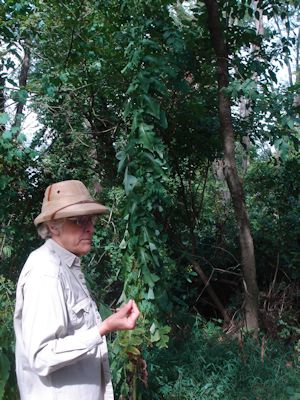On Saturday morning, September 3, 2016, as Hurricane Hermine pounded Virginia’s coast, 25 FODMers studied the plants of Dyke Marsh on a windy, “rainless,” three-hour walk. “At least there’ll be fewer mosquitoes,” quipped walk leader Dr. Elizabeth Wells, Associate Professor Emerita of Botany at the George Washington University. Her commentary was engaging and wide ranging, covering plant taxonomy, reproduction, structure, pollination, predation, host plants and more.
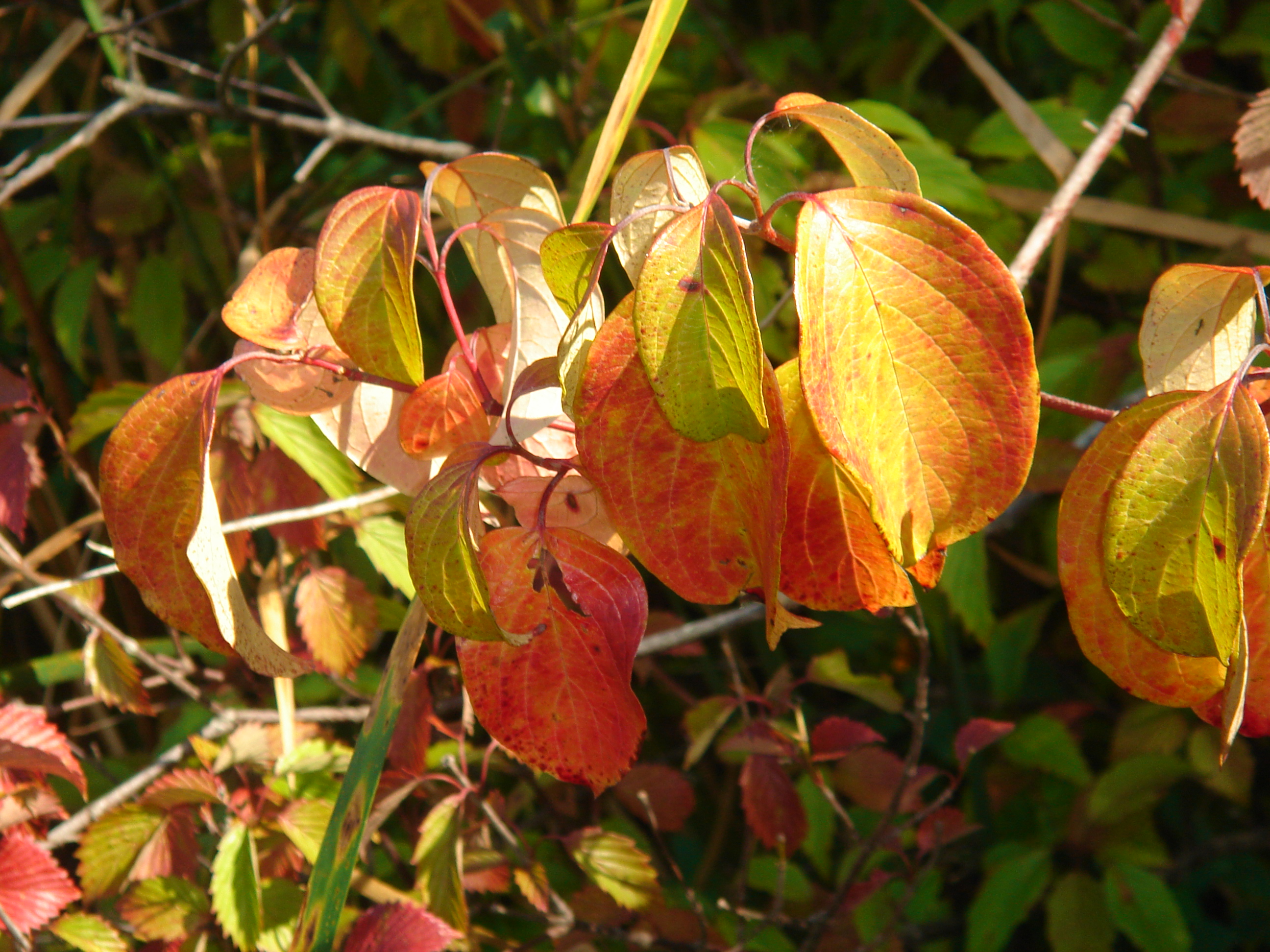
There were clear signs of fall. Swamp dogwood (probably Cornus amomum) leaves were becoming burgundy red. Pokeweed (Phytolacca americana) berries were transitioning from green to deep purple. These are favored fruits of many birds, though they are toxic to humans.

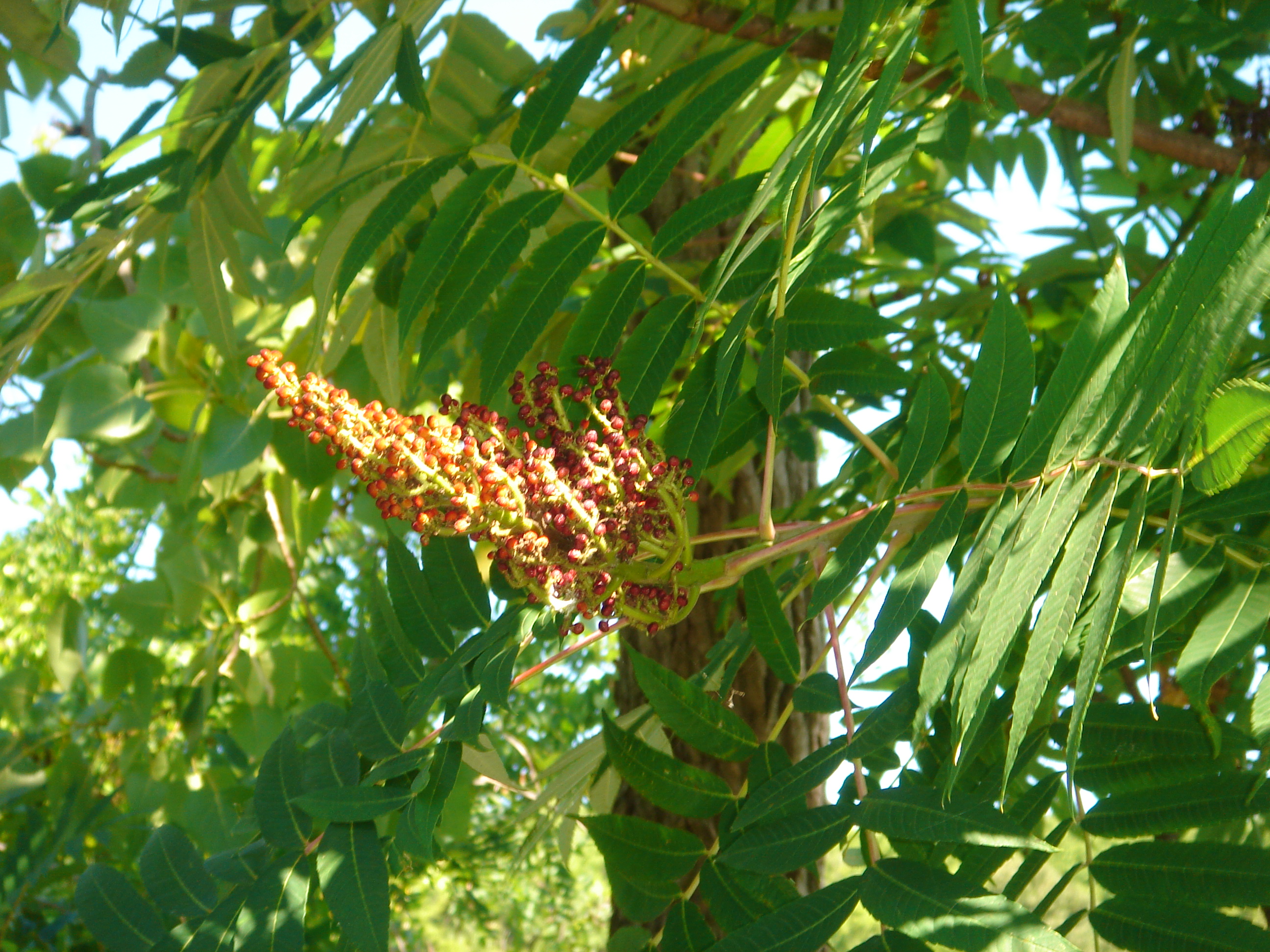
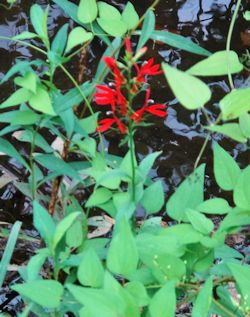 Cardinal flower
Cardinal flower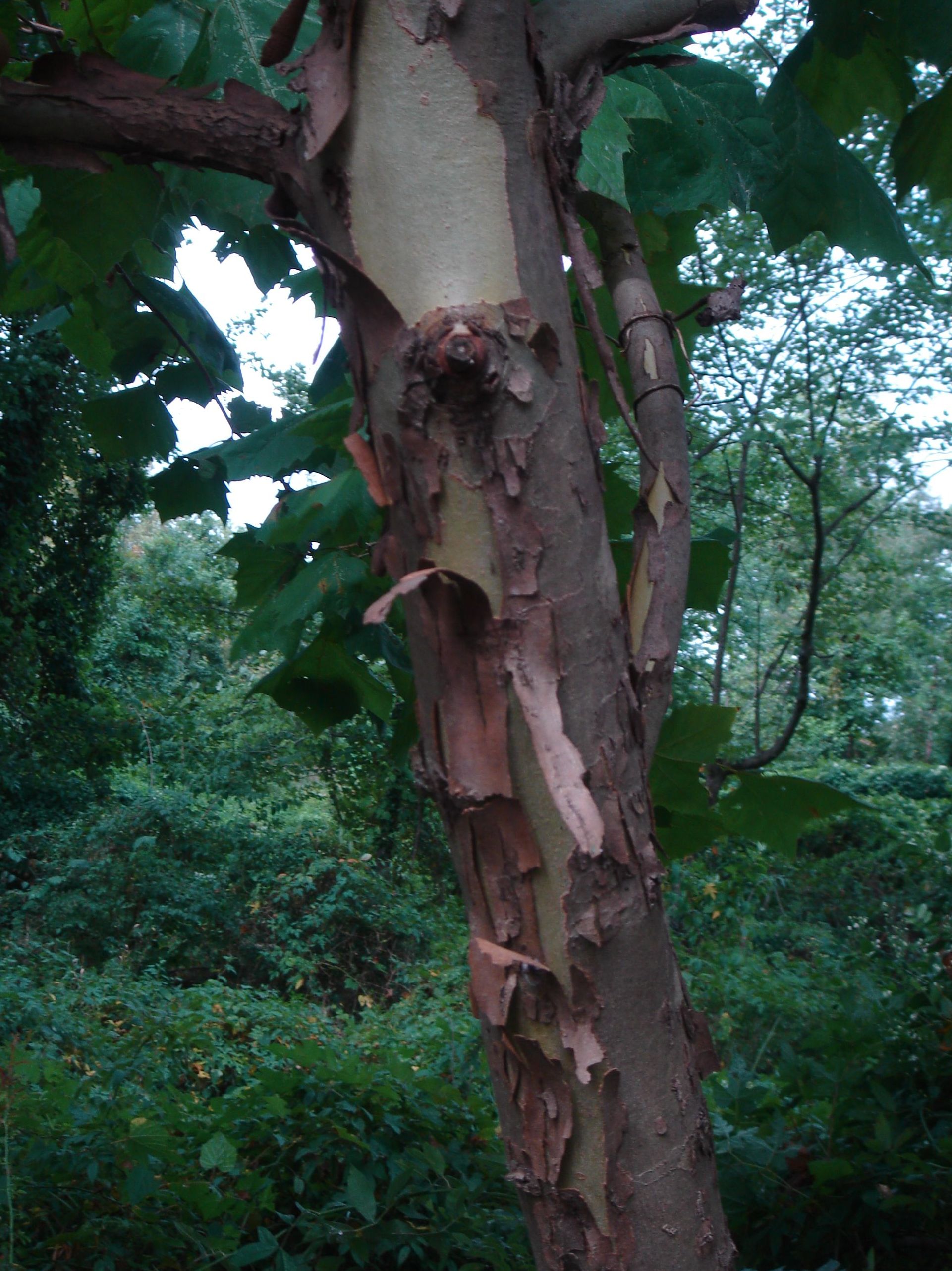 Sycamore tree with scaly bark Dyke Marsh’s sycamore trees (Platanus occidentalis), trees that thrive near water, were displaying their scaly bark. On the subject of trees, Dr. Wells said, “The green ash (Fraxinus pennsylvanica) is popular to chew on if you are a beaver.” There was evidence of chewing.
Sycamore tree with scaly bark Dyke Marsh’s sycamore trees (Platanus occidentalis), trees that thrive near water, were displaying their scaly bark. On the subject of trees, Dr. Wells said, “The green ash (Fraxinus pennsylvanica) is popular to chew on if you are a beaver.” There was evidence of chewing.
The dark purple flowers of New York ironweed (Vernonia noveboracensis) bobbed in the wind. Cardinal flowers (Lobelia cardinalis) sprang out of the wetland, sporting their bright red hues. “They are humming bird pollinated,” Dr. Wells commented. A few spatterdock or yellow pond lily plants (Nuphar luteum; N. sagittifolia) still had their yellow, golf-ball-shaped flowers.
The tall, large-leaved, yellow leafcup impressed the walkers. On the subject of yellow, the group spotted the vine dodder (Cuscuta gronoviii) clumped along the shoreline like a wad of orange spaghetti.

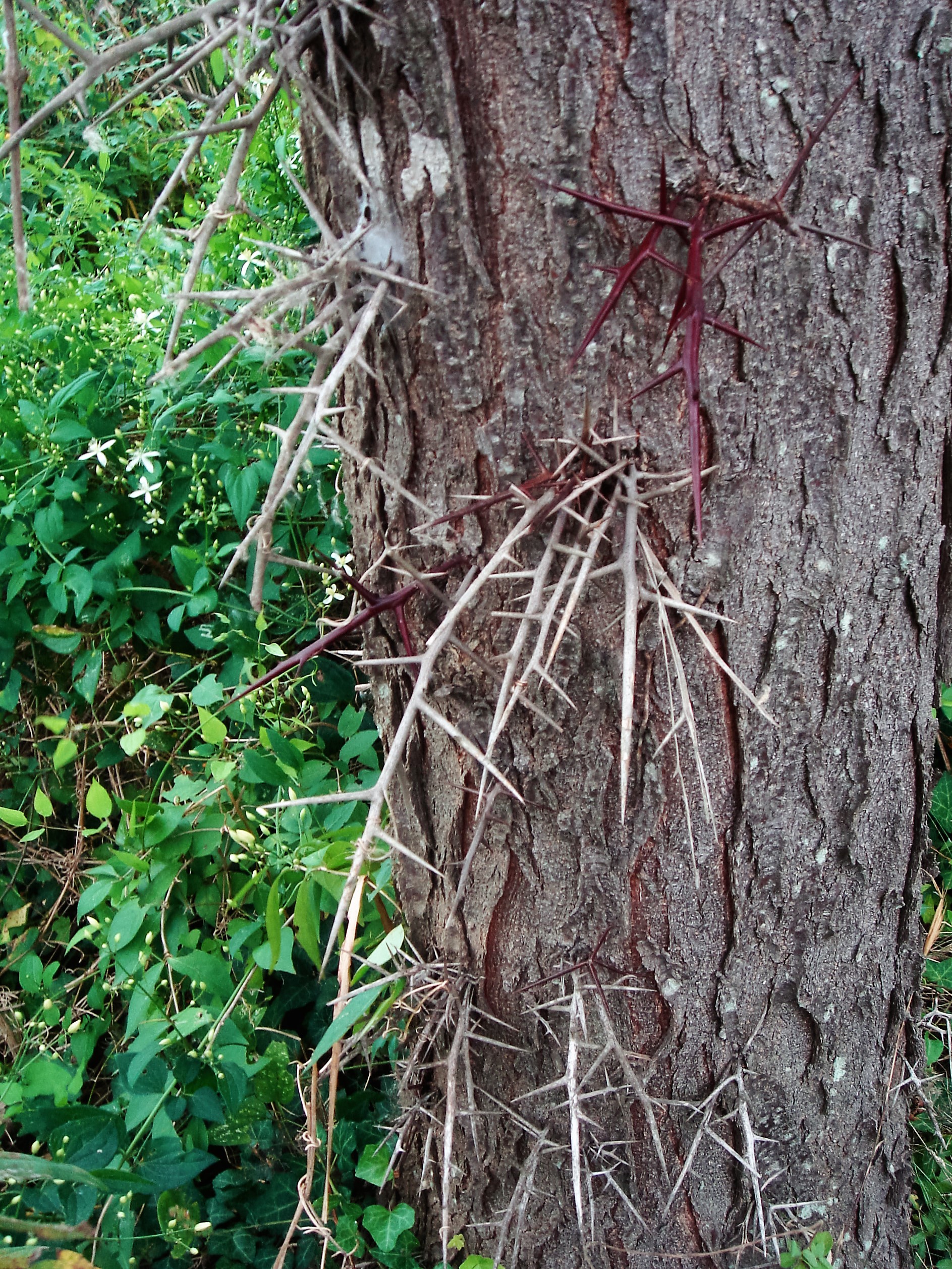
Especially imposing was the honey locust tree (Glendistica triancanthos), with four-to-five-inch sharp thorns poking out of the trunk. “This tree may have evolved with the big herbivores,” Dr. Wells said. “The thorns protected the tree so that the predators could not eat the fruit,” she theorized. Even the honey locust seedlings springing up nearby sported inch-long spines.
More than Plants
 Hornet's nest
Hornet's nest 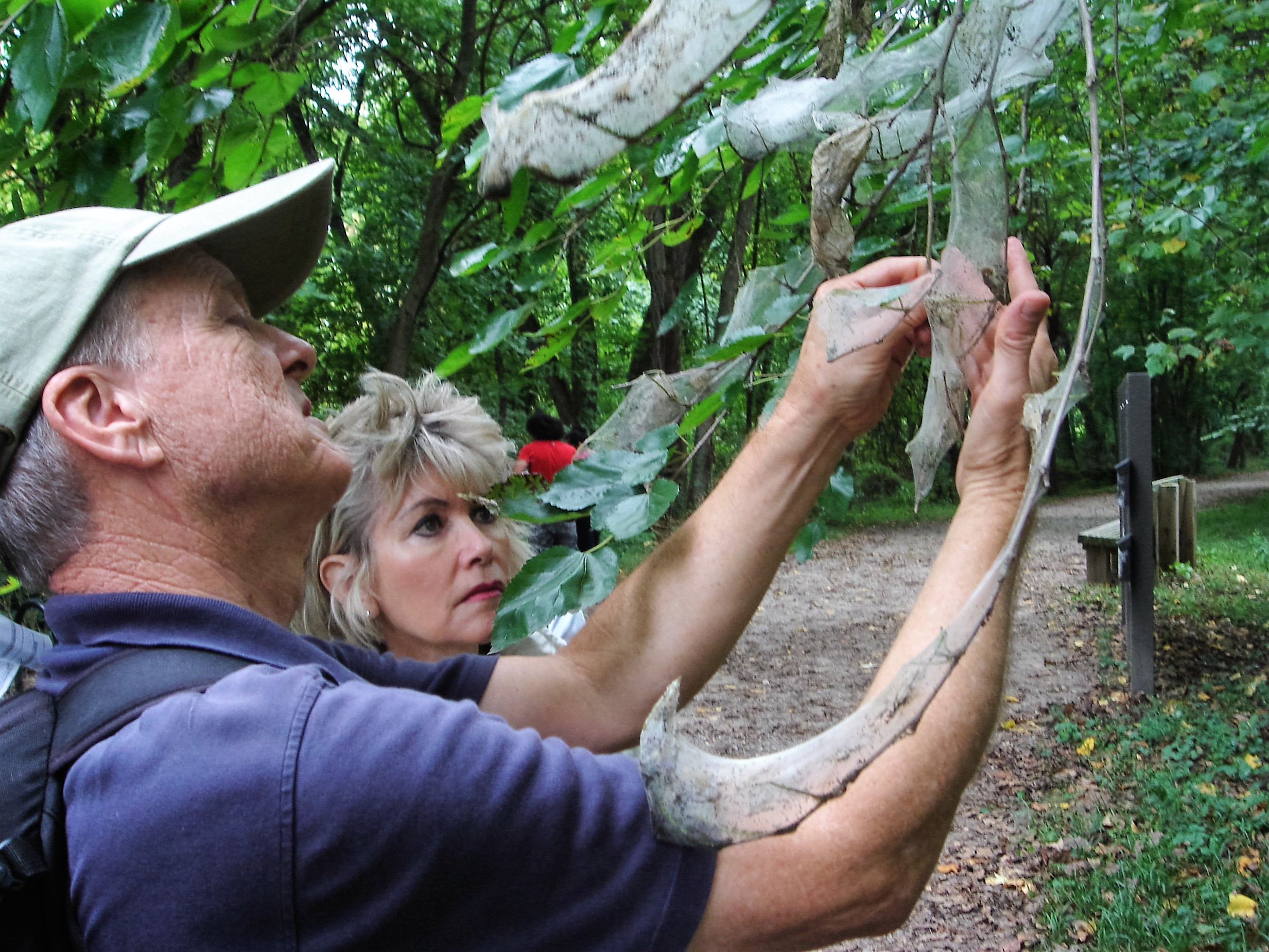
As the walk ended where the Haul Road trail meets Marina Road, FODMers studied the nests of the fall webworm (Hyphantria cunea), a native moth that weaves webbed nests on tree limbs in late summer and fall. “It is not harmful to trees,” Dr. Wells noted.
There is much to learn in the Dyke Marsh Wildlife Preserve.
Photos courtesy of Glenda Booth.

